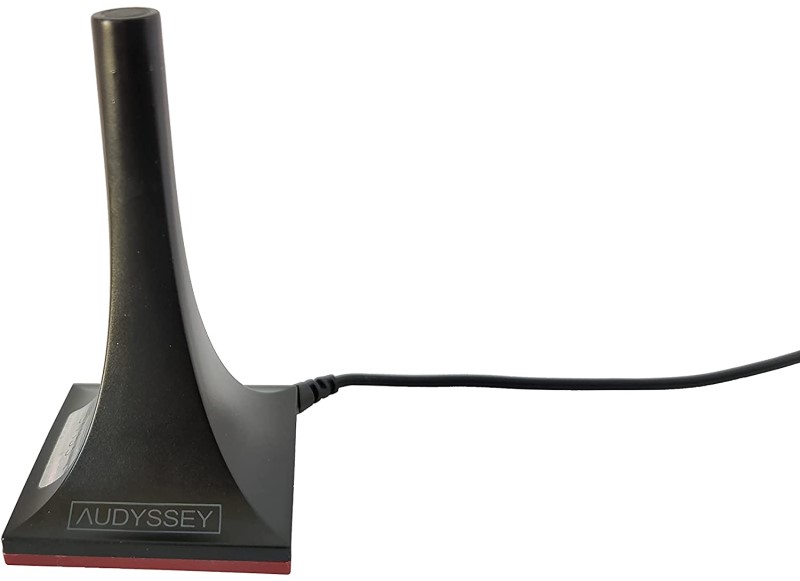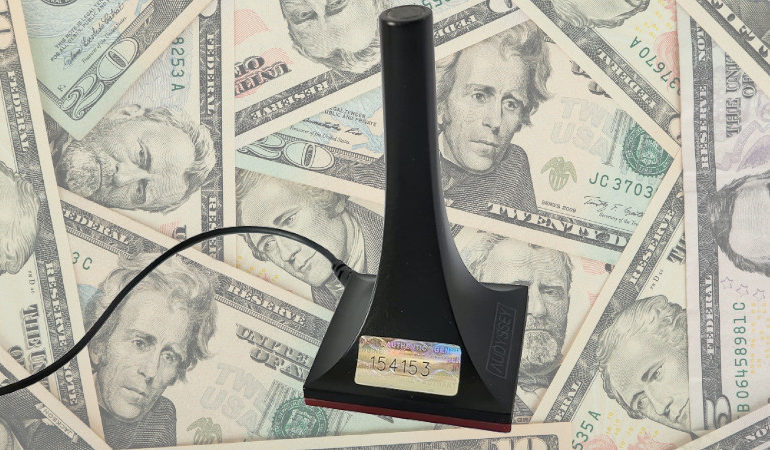Is the Audyssey ACM1-X Mic Worth It?
Audyssey, making good on its promises when releasing MultEQ-X, has released a new microphone that you can purchase. The “new” microphone looks an awful lot like the included mic with your AV receiver. But there is a difference. The Audyssey ACM1-X mic comes with a serial number. When you are using MultEQ-X, you can plug that serial number into the program to access an individual calibration file. Sounds pretty sweet, huh? Not so fast. We have some reservations. Time to answer the question on whether or not the Audyssey ACM1-X mic is worth the $80 they are charging.
What is the ACM1-X Microphone from Audyssey
The ACM1-X mic is not unlike the standard microphone that comes with your Denon or Marantz receiver. If you think it looks the same, that’s because it is. If you were to buy one and plug it into your compatible receiver, it would work just fine. It should also give you similar results as the mic that came with your AV receiver. So why does it cost nearly double the price of a standard replacement microphone?
A calibration file. Basically, the ACM1-X has been sent to Audyssey and has been measured individually. That measurement has been compared to a professional microphone. Any differences are adjusted in the calibration file so that the ACM1-X will be just as accurate as the professional microphone. That sounds pretty sweet. But there are issues.
Restrictive Access
The problem here is access. That calibration file is walled off inside Audyssey’s servers. If you want access to it, you must pay the licensing fees to get access to MultEQ-X. Of course, MultEQ-X only works with select Denon and Marantz receivers. But, if you have a compatible receiver, and you pay the $200 for MultEQ-X, the $80 ACM1-X mic will work. You plug in the serial number and the correction file will be downloaded into the program.

That’s the real problem here. There is no way for you to have access to that calibration file outside of the Audyssey programs. Could they have sent the file on a flash drive (or just let you download it directly from them)? Yes. But, instead, they only allow access through the MultEQ-X program. This means that if you want to use the calibration file in another program (like REW), you can’t. It also means that if something happens to that serial number, you’ve lost access to the calibration file. There is no way to back it up. Lastly, if Audyssey decides to stop supporting the mic, the MultEQ-X program, or any of it, you’ll lose access to the calibration file.
Calibration Files Aren’t Forever
If you ask a professional sound designer about their professional microphones, they’ll tell you that they have the recalibrated all the time. At the very least once a year. They may go as long as two but not more. This is because microphones slip out of alignment with time and use. While the amount of misalignment may be too small for the home user to care about, it should be noted. Is it worth paying for the Audyssey ACM1-X mic when the calibration file is really only good for a year or two? You have to decide.

Alternatives
Unfortunately, there are no real alternatives to the ACM1-X mic right now. Not if you want to use a microphone with the Audyssey room correction program. Audyssey has promised that they will be offering “professional” microphone kits, but those are sure to be too expensive for casual users.
The problem with the ACM1-X is that you can only use it with your Denon or Marantz receiver. Even if you wanted to use it with your computer and, say, Room EQ Wizard, there is no access to the calibration file. This makes the extra cost of the ACM1-X so much harder to swallow.
If what you want is a more flexible calibrated microphone that can be used with multiple systems, we’d suggest heading over to Cross Spectrum Labs. Their calibrated UMIK-1 microphones will work with Room EQ Wizard, Dirac, and most other programs you want. You won’t be able to use them with Audyssey or Yamaha’s room correction programs directly, but you will be able to use them to check the results. Add a Mini-DSP and you can use your mic, laptop, and free Room EQ Wizard program to further dial in your subwoofers’ performance. At $110, it is more than the Audyssey ACM1-X mic, but it is much more versatile.
Is the Audyssey ACM1-X Mic Worth It?
If you’ve already paid for Audyssey MultEQ-X, the ACM1-X mic might be worth the cost. Audyssey has said that the mic is already very accurate (their claims, not our measurements) and the correction file just dials in the very last inaccuracies. That may be true. But hiding that correction file away from view creates some suspicion. Why not just allow users to download it? It isn’t like it can be used with any other microphone right?
Unless the calibration file isn’t all that individual. If Audyssey was applying a more global calibration file (maybe by batches as delineated by the serial numbers), that would quickly become apparent if users had access to the raw file. We’re not suggesting that is what is happening, but it is certainly very suspect that they won’t give access to a calibration file that should be useless to anyone that isn’t the owner of the purchased microphone.
Take Away
Honestly, I have a hard time justifying the cost of the ACM1-X mic. Maybe if I lost my original microphone I might consider it. But only if I had invested in MultEQ-X (which I have no plans to do). Even then, by Audyssey’s own admissions, their standard mics are very accurate. So why buy this? You tell me in the comments below.



Because the dog ate the standard mic.
1. Because it’s a status symbol. 2. Because it gives our golden ears one more decibel of accuracy. 3. Because we want it even if we don’t need it.